Last year on the eve of 344th anniversary of Shri Guru Tegh Bahadurji’s martyrdom on November 24, I had posted an appeal to Delhi Chief Minister, Arvind Kejriwal and the Urban Development Minister, Shri Hardip Puri that the popularly known Fountain Chowk ( also called Phavvara) in Chandni Chowk be memorialized as Bhai Mati Das Chowk and made an made integral part of the ongoing Chandni Chowk redevelopment project. But for a whole year before that, as a member of the Task Force set up to monitor the Chandni Chowk redevelopment project, I had continually nagged the officials in-charge to make Gurudwara Sis Ganj and the martyrdom site as a centre piece of the rejuvenated Chandni Chowk.
Its fortunate that the High Court and the Religious Committee of the city government endorsed this demand. Soon after, Delhi’s PWD Minister Satyendar Jain announced that directions regarding Bhai Mati Das Chowk should be implemented and the historic structure be made an “integrated part of Chandni Chowk road redevelopment plan.”.
I reproduce in full the text of my appeal and the historical significance of Gurudwara Sis Ganj and Mati Das Chowk along with the story of MANUSHI’s association with Chandni Chowk Redevelopment Plan.
————————————————
Dear CM Kejriwal ji and union minsiter for urban development, Hardeep Puri ji, I am making a special appeal to both of you on the eve of 344th anniversary of Shri Guru Tegh Bahadurji’s martyrdom, which took place on 24 November 1675. As you know, the sacred site of his martyrdom is in Chandni Chowk area and is today known as Sis Ganj Gurudwara.
The entire Chandni Chowk area, which had earlier become a symbol of urban chaos, is currently undergoing a major redevelopment programme. We consider it a great blessing that the project for the rejuvenation of Chandni Chowk took off as an offshoot of public interest litigation (PIL) filed by Manushi in the Delhi High Court way back in 2006.
The PIL itself was part of a long-drawn advocacy campaign launched by Manushi in 1996 to ask policy-makers and administrators of Delhi to stop their war against non-motorised vehicles, NMVs for short. Thousands of these humble, eco-friendly vehicles were routinely confiscated every month and sold as junk by the municipal agencies. These NMVs were treated as an unwanted nuisance and denied due to legal protection.
Among other things, the PIL had demanded that instead of crushing cycle-rickshaws and bicycles, the government ought to provide dedicated NMV tracks to promote these vehicles as eco-friendly modes of travel for short-distance commutes when motor vehicles are choking our cities with poisonous fumes.
In addition, we demanded pedestrian-friendly road designs with functional footpaths so that people can walk safely to nearby workplaces or for local shopping instead of being forced to use cars or motorbikes.
In 2010, the hostile laws governing non-motorised vehicles were struck down by the high court as unconstitutional. In addition, the court ordered the Delhi government and the Municipal Corporation of Delhi to implement some pilot projects to make our city NMV- and pedestrian-friendly.
One such pilot project is the redevelopment of the historic Chandni Chowk area, where motor vehicles will be barred entry during the day, with the whole area being dedicated to pedestrians and NMVs. Karol Bagh has already undergone this transformation and Kamla Nagar is listed as the next beneficiary. All over the city, several NMV tracks have been constructed on a trial basis as part of high court-monitored pilot projects.
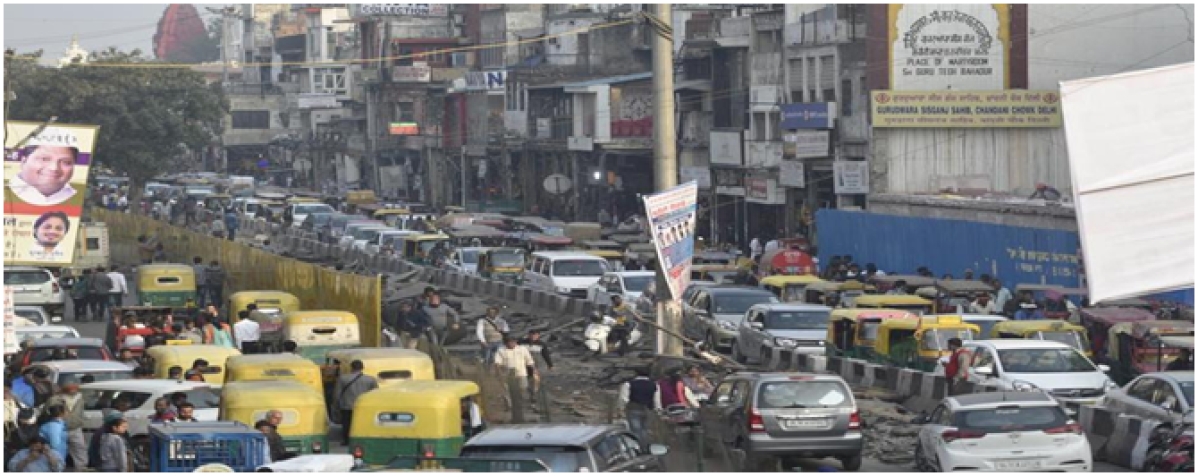
Chandni Chowk: From urban chaos (above) to how it may look after redevelopment (a digital rendering, below)
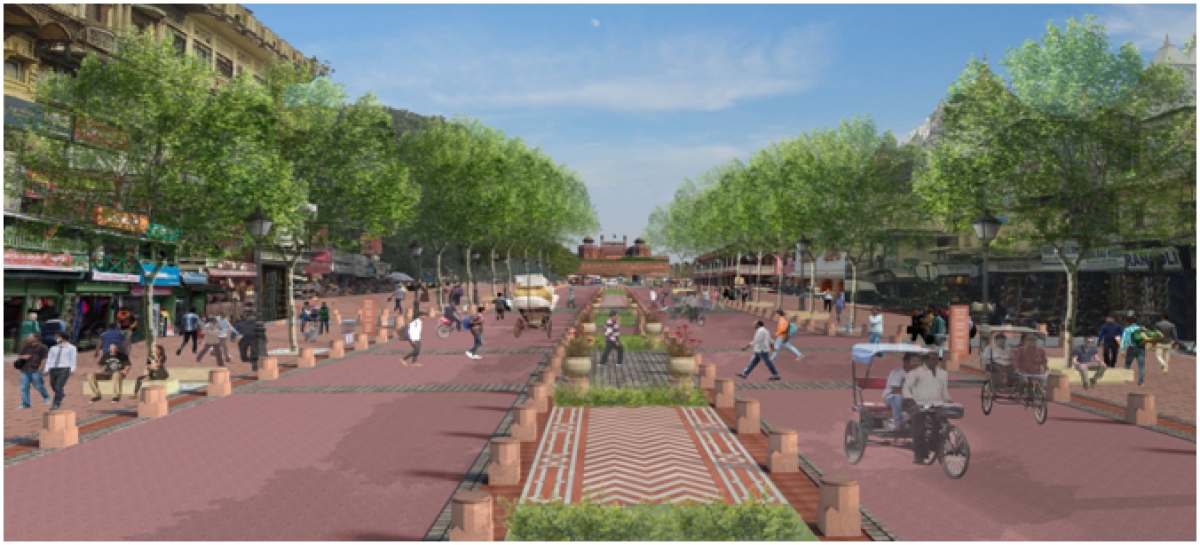
Obsession With Mughal Grandeur Erases Native History: However, since the Chandni Chowk area hosts several historic sites, it has thrown up a few problems which merit your personal attention and intervention. To begin with, the entire Chandni Chowk Redevelopment Plan is focused on recreating and celebrating, in a modernist idiom, the grandeur of the Mughal heritage, from the Red Fort to Fatehpuri Masjid.
Those handling this project, or even the experts of the Delhi Urban Arts Commission who have held up the project for months on end to ensure that the Mughal heritage is preserved in its “pristine purity”, have not shown equal awareness of two very important sacred sites in the Chandni Chowk area, namely the Sis Ganj Gurudwara and Bhai Mati Das Museum. The area between them was named the Fountain Chowk to honour a waterless fountain standing there as a clumsy relic of the British raj.
The importance of these sacred sites has been deliberately diminished in popular memory through partisan state policy. Here is a brief summary for the benefit of those who have forgotten what Sis Ganj Gurudwara and Bhai Mati Das Museum, situated in the middle of Chandni Chowk, represent.
Guru Tegh Bahadur’s Awe-Inspiring Satyagraha Against Conversions: In May 1675, a group of Kashmiri Brahmins came to seek Guru Tegh Bahadur’s help in stopping the onslaught of forced conversions of Hindus ordered by Aurangzeb. Guru Tegh Bahadur decided to stand up for the freedom of his people and sent a message to Aurangzeb that if he could first convince him (ie, Guru Tegh Bahadur) to become a Muslim, then the Brahmins would also convert.
Guru Tegh Bahadur then nominated young Gobind Rai (later known as Guru Gobind Singh) as his successor, and on 11 July 1675, he left Anandpur for Agra to confront Aurangzeb at his durbar. He was accompanied by three companions, Bhai Mati Das, Bhai Sati Das and Bhai Dayala. They all knew they were courting death by joining their Guru.
Bhai Mati Das and Bhai Sati Das were born in a Brahmin family of the Chhibber clan in village Karyala, in the Jhelum District of Punjab, now in Pakistan. Their grandfather, Bhai Praga, had become a follower of Guru Har Gobind and had taken part in battles with Mughal forces.
Bhai Dayala was 15 when he joined the Guru’s Sangat. His ancestors belonged to Alipur near Multan. His grandfather, Bhai Balu Ram, had attained martyrdom while fighting in Guru Har Gobind’s first battle of faith against the Mughals.
All four were arrested en route and taken in chains to Delhi and locked up in prison from July to November 1675. During their incarceration, Guru Tegh Bahadur and his three companions were starved and tortured mercilessly. When these brutalities did not result in their yielding to conversion, Aurangzeb ordered that Guru Tegh Bahadur be beheaded.
To test his resolve further, Aurangzeb told his minions to first slaughter the Guru’s companions before his eyes, hoping that the sight of their suffering might shake Guru Tegh Bahadur’s resolve and pressure him to save himself by agreeing to embrace Islam.
Bhai Mati Das, chosen to be the first martyr, was led out in chains under heavy guard. The spot fixed for his execution was the Kotwali. He was tied between two erect flat logs of wood and sawed alive from the head through torso till he bled to death. Despite such an agonising death he refused to convert and kept chanting the japji, a prayer composed by Guru Nanakji, till his last breath.
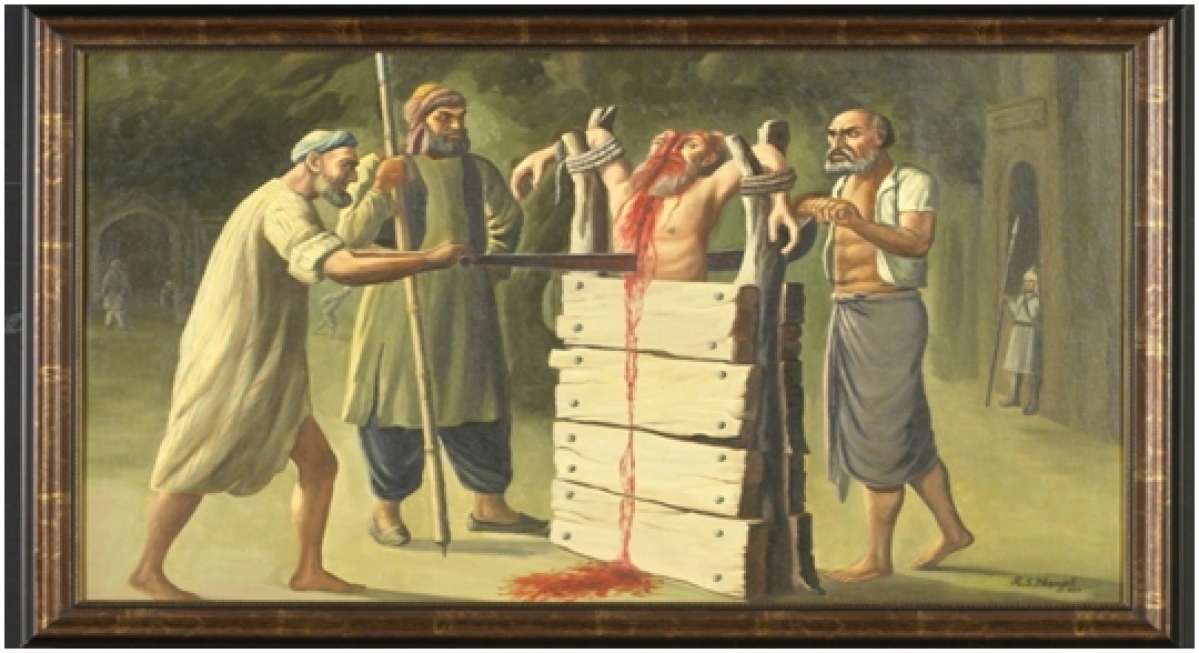
The next to be martyred was Bhai Dayala. They led him to the spot where Bhai Mati Das had been sawn into two and advised him to be wiser. But he too refused to give up his dharma. He was seated in a large vessel, which was then filled with water. Then they lit a fire with wood piled beneath so that the boiling water scalded Bhai Dayala to death. He too kept chanting Guru Nanak’s japji till he died.

Bhai Dayal Das being boiled to death on Aurangzeb’s orders. Image courtesy: http://sikhmartyr.blogspot.com/p/bhai-mati-daas-sati-daas-dayal-daas.html
Then came the turn of Bhai Sati Das, who also stood firm and refused to denounce his dharma and accept Islam. Enraged at this, the Qazis ordered that Bhai Sati Das be wrapped in cotton wool, which had been soaked in oil. The cotton was then set afire and he was roasted alive. Even he continued reciting the japji till his last breath.

Despite witnessing such horrors, Guru Tegh Bahadur did not yield to conversion. So, he too was beheaded halal style in Chandni Chowk on 24 November 1675. His executioner was Jalal-ud-din Jallad, who belonged to the town of Samana in present-day Haryana. The spot of the execution was under a banyan tree (the trunk of the tree and the nearby well, where he bathed, are still preserved). Gurudwara Sis Ganj stands at the site where Guru Tegh Bahadur was beheaded.
Aurangzeb had ordered that none be allowed to cremate Guru Tegh Bahadur’s mortal remains so that vultures would come and feed on them. But at the risk of their own lives, two of Guruji’s devotees defied this farmaan. His head was carried away by Bhai Jaita to Chak Nanaki (later renamed Anandpur Sahib), where the nine-year-old Guru Gobind Rai cremated it. His body, which was to be quartered, was stolen by another daring follower, Lakhi Shah Vanjara, under the cover of darkness that descended with a sudden sandstorm. He carried it away hidden in his cart under a load of hay. After reaching the headless body to his modest home at the outskirts of Delhi, he cremated his Guru’s remains by setting his entire home on fire. Gurdwara Rakab Ganj Sahib stands at this spot today.

Painting depicting Guru Tegh Bahadur’s serenity even when facing brutal death; Bhai Jaita and Lakhi Shah Vanjara retrieving Guru Tegh Bahadur’s remains for a proper cremation. Image courtesy: http://pilgrimage-sikhism.blogspot.com/2010/09/guru-tegh-bahadur-jis-sacrifice-to.html
Every Gurudwara remembers the story of this martyrdom in its daily ardaas in the following words:
Remember those brave Sikh men and women, who sacrificed their heads for the sake of Dharma; Who were cut into pieces from each joints of their bodies; Whose heads were chopped off from their bodies; Who were tied and crushed between wheels till all the bones in their bodies were smashed; Who were sawed to death; Who were flayed alive; Who sacrificed themselves to upkeep the dignity of the Gurdwaras; Who did not abandon their Sikh faith…
Gurudwara Sis Ganj and the Bhai Mati Das Memorial are symbols of the heroic resistance of our ancestors to forced conversions and brutal subjugation.
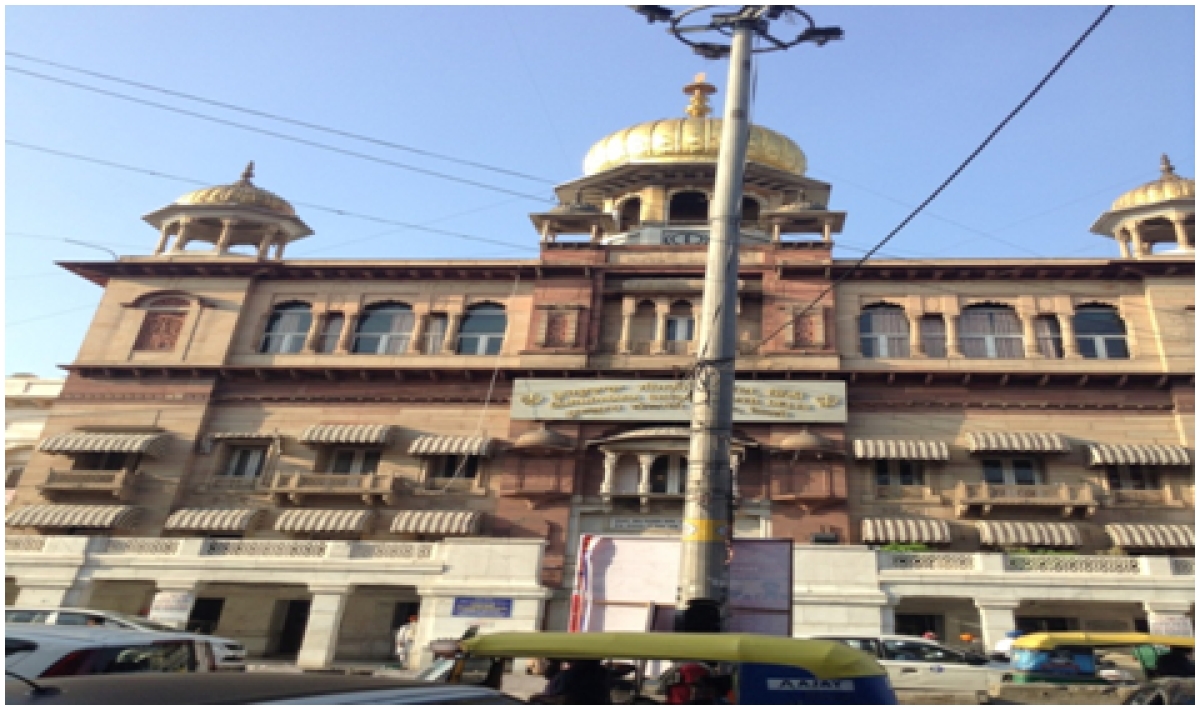
Present day Sis Ganj Sahib Gurudwara, constructed in this form in 1930s.
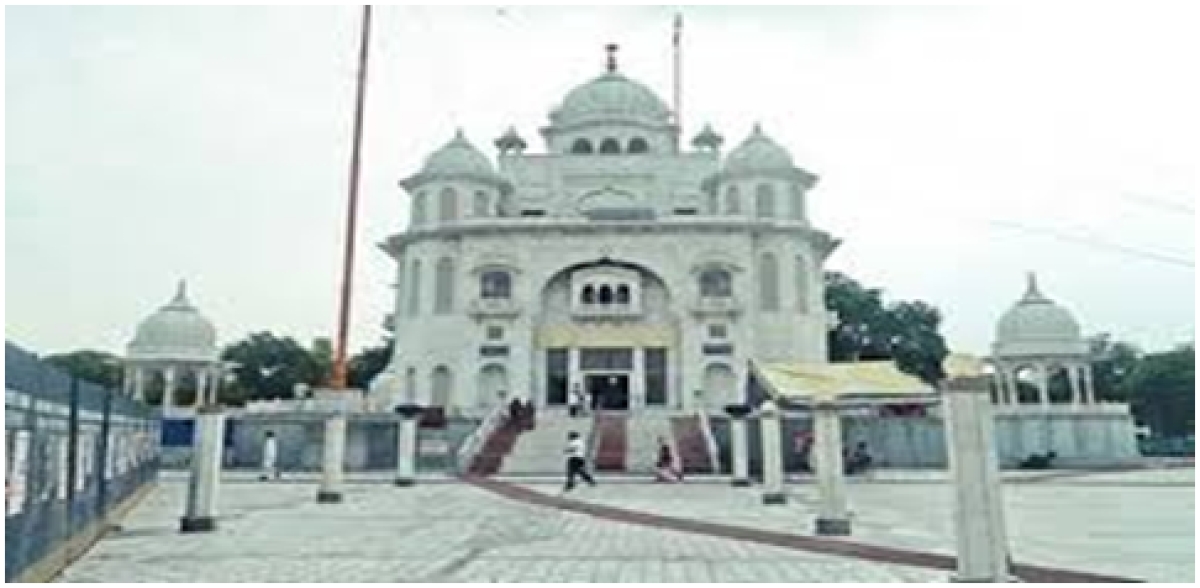
Gurudwara Rakab Ganj Sahib in Delhi.
Guru Tegh Bahadur and his three companions are the most awesome satyagrahis India has ever produced. Mahatma Gandhi’s satyagraha was baby stuff in comparison. The devotees of the Great Gurus kept the sacredness of that site in their hearts and minds even though it was not possible to commemorate those sites under Islamic rulers. The Gurudwara in its present form was constructed as late as in the 1930s.
It was in the compound of the Kotwali that Bhai Mati Das, Bhai Sati Das and Bhai Dayala were done to death in the most gruesome manner by Aurangzeb’s executioners. The British had turned the Kotwali into a colonial-style police station. It stood right next to the Sis Ganj Gurudwara. In the year 2000, the Delhi government handed over the Kotwali-turned-police-station compound to the Sis Ganj Gurudwara management for its expansion.
Irfan Habib-Romila Thapar School Of Distoriography Erases This Memory: Sadly, during my years as a history student at the Jawaharlal Nehru University (JNU), I did not once hear the names of Guru Tegh Bahadur, Guru Govind Singh and others who fought against Islamic tyranny because we were fed on the Irfan Habib-Romila Thapar School of Distoriography.
I learnt about the Great Gurus from my parents and by listening to Gurbani. So deeply ingrained are the biases inculcated by Left historians that they reflect in every aspect of our lives, including the naming of roads.
Despite the horrors of Partition, in the heart of imperial Delhi, major roads were named after Mughal rulers, from Babar, Jehangir, Akbar and Shah Jehan to Aurangzeb and Bahadur Shah Zafar. But it didn’t occur to our rulers to rename Chandni Chowk as Guru Tegh Bahadur Chowk.
Delhi Tourism does not promote Gurudwara Sis Ganj Sahib as an important landmark the way it holds up the Red Fort as the foremost identity marker of Delhi.
Therefore, it is no surprise that the team handling the Chandni Chowk Redevelopment Project has not engaged with the Sis Ganj Gurudwara management to draw up plans to commemorate this sacred site in an appropriate manner.
By all means, redevelop the area and preserve the Mughal monuments. But don’t gloss over the painful fact that in popular memory (as opposed to Bollywood masalas), this phase of history is remembered as one of religious persecution, forced conversions, destruction and plunder of our temples, rapes and mass abduction of women for turning into sex slaves.
Some enthusiasts among the Gurudwara management team have erected a very shoddy structure in a make-shift manner on the periphery of the Fountain to commemorate the martyrdom of Bhai Mati Das, Bhai Sati Das and Bhai Dayala. (See photos below). Funnily enough, the Shiromani Gurudwara Prabandhak Committee (SGPC) has picked up cudgels with the Delhi government to let this crudity remain untouched since it is part of ‘Sikh heritage’. Sadly, the SGPC is probably distorting its own history by pretending that the Chowk was the site of martyrdom when it is mentioned in their own literature that the actual site was the Kotwali. In any case, such a crude structure is an insult to the memory of those great men.
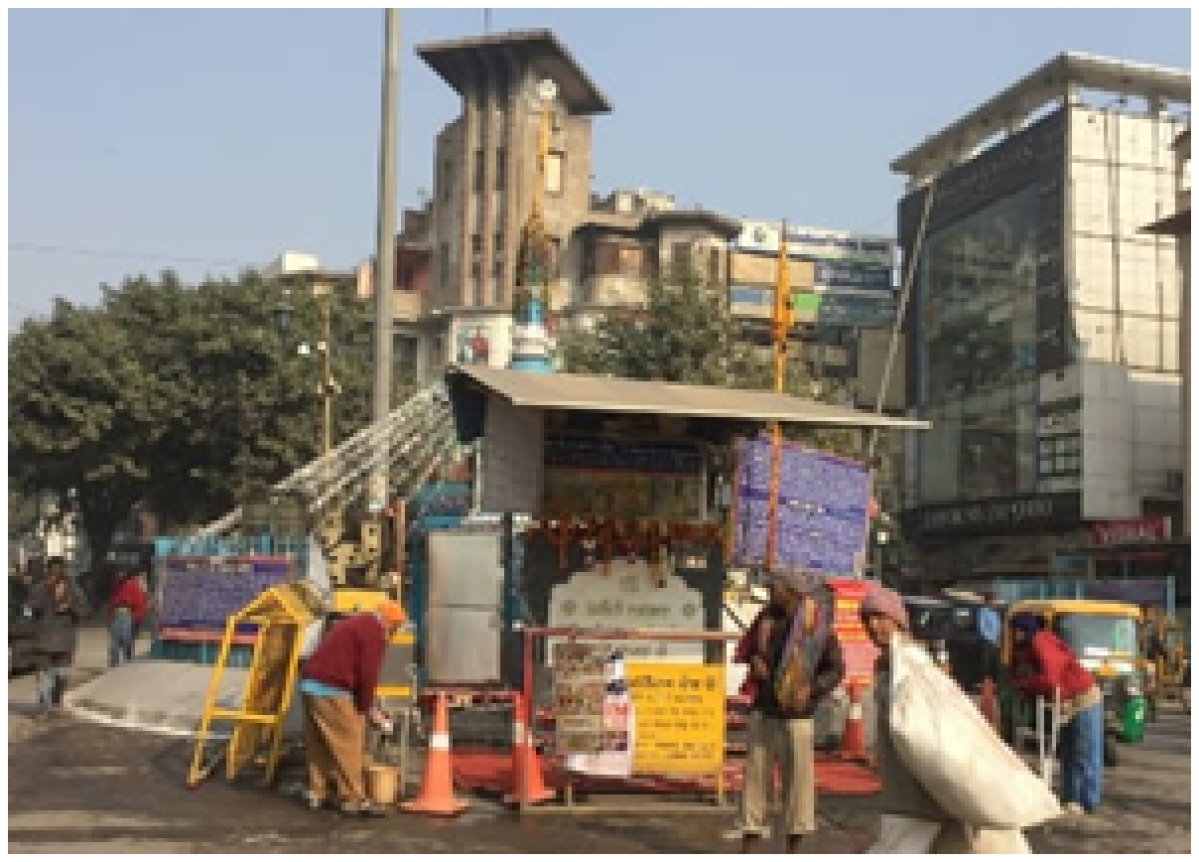
A makeshift memorial for Bhai Mati Das, Bhai Sati Das and Bhai Dayala at Fountain Chowk (above) whereas the site of his martyrdom was the Kotwali (below)
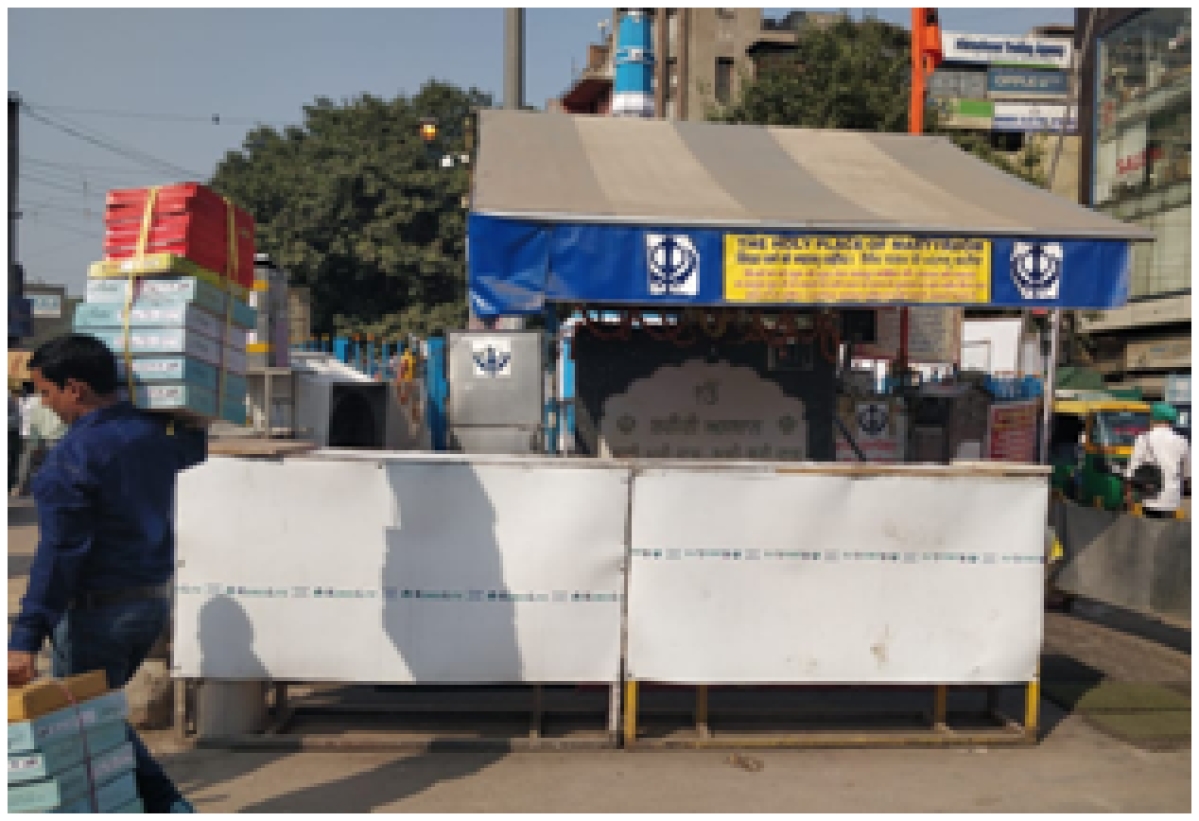
I appeal to you Mr Kejriwal and Mr Puri to join together in commemorating the sacred sites associated with these awe-inspiring defenders of our dharma as the centrepiece of the Chandni Chowk Redevelopment Programme. Let party politics not come in the way of your cooperation on this issue. The Fountain Chowk should be renamed as Sis Ganj/Bhai Mati/Sati/Dayala Chowk since it stands between the two historic buildings.
Sis Ganj/Bhai Mati Das Chowk Deserves To Be A National Monument: To those who say commemorating this site of satyagraha will be politically provocative, I say this: though we can’t undo certain painful aspects of our past, we should also not erase from memory the awe-inspiring resistance to tyranny offered by our ancestors during those dark days of history.
Because of this cultivated amnesia, today only those officially designated as Sikhs own up to the Sis Ganj Gurudwara. The rest of us have been made to forget our deep connection with the great Gurus. This diminishes Guru Tegh Bahadur’s status to that of a leader of the panth, whereas he and his comrades should be remembered as national heroes and the site of their martyrdom treated as a national monument.
The memorial should be designed in such a manner that it provides a brief history of Sis Ganj Gurudwara and the Bhai Mati Das Memorial in the Chowk itself so that more people are inspired to pay their homage at the historic gurudwara and visit the Museum which currently lies neglected.
In addition, the government should consider converting the Town Hall building into a museum of Delhi’s history – pre-Islamic, post-Islamic, British and post-independence eras. Why are we letting our younger generation grow so ignorant about our past? It is a well-known truism that those who don’t learn from their past are condemned to repeat the very same blunders time and again.






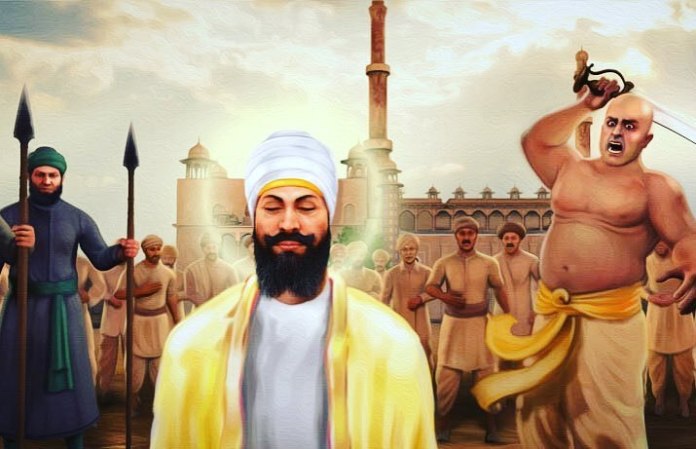
Well written, hits the nail on the spot, but Mr. Kejriwal will listen? Doubtful…
Appreciate your efforts and support your legitimate demands before Center and Delhi Government. Thanks a lot
A fervent appeal which should be implemented in right earnest to safeguard the causes of this great sacrifice of Guru Tegh Bahadur Ji and his Disciples. It will also high light and bring in public domain the selfless nature of the Great Guru – Army Veteran.
Its so heartening to see someone engage herself so intensively and honestly with our past. We Indians have been so enslaved by the Islamist as well as British rulers that we still have not revived our self respect to remind ourselves of what brutalities have been comitted on us by not building monuuments in praise of our heroes and maryyrs like Guru Tej Bahadur and others who endured unimaginable pains but did not convert their dharma.
I congatulate you Madhu for this endevour you undertook.
Very well researched journey into our collective past.This makes us realise how our saints have made supreme sacrifices to preserve our institutions.
Your connect and unshakeable faith in Hindu-Sikh bonds comes from your parents, especially your mother who could explain things in the simplest of words.
We respect your indepth knowledge and your zeal to bring about awareness and project history in all its honesty. Keep up the great work that you doing.
More power to you. So much more to do.
It is even today nerve shattering…. Wonder if our ministers are blind or illiterate… no cold blooded. Can’t they realise if it wasn’t for the sacrifice of such Guru’s there wouldn’t have been any Chandani Chowk to beautify. Wake up heads of concerned department heads
Pride of Nation.. well Written ma’am..????
Great efforts and support your legitimate demand. Our society will always be greatfull to the people like you who serve our society by doing selfless service to preserve our history.
Thank you for your great efforts to preserve our great history. We also support your legitimate demand before centre and state government.
It is an open fact that even after 70 plus years of independence, our government in place have paid much attention to Islamic terror. Once in a while, current government may have been successful encountering Islamic terror on the border but not much within Hindu’s communities. Lets not depend upon Kejriwal or Modi, please formulate an strategy to raise funds and install such monument in right place with our own collected money. Jai Hind!–Dr. Kumar Arun (USA)
The demand for fitting memorial for guru Tegh Bahadur and Bhai Mati Das in central Delhi is most justified and AAP government would concede, it is hoped.
Terrific write up, Madhu! Wonderfully articulated. Great service to Bharat’s history, so distorted by Habib-Thapar gang.
Very heart touching facts you have narrated ms Kishwar..you perhaps remember that mrs shiela Dixit created Guru Teg Bahadur Memorial near Singhu border of Delhi. When I was MD DELHI TOURISM, on advice of ms Dixit, I created an interpretation centre i.e. a unique sound and light show (worth ₹ 10 crores with Daler tribute song and voices of Kabir Bedi (Eng) and Om Puri ( hindi) in memory of ‘ Hind Ki Chadar’. The show was inaugurated in early November 2013. (I retired on 30th Nov 2013) . Mr Kejriwal govt took over in December 2013 but nothing happened thereafter. Show closed! A wasteful infrastructure it became. It can still be revived.
This SEL is a unique show created by Himanshu Sabharwal ( of old fort sel fame) and it is through light projections on ground rather than usual SEL through light projections on walls. Concept of Phoenix as also found in Gurbani was created by extraordinary music by none other than Amjad Ali Khan. You may get it dogged out from Tourism deptt or DTTDC.
I will certainly take up this issue with the Delhi Govt. Thanks for bringing it to my notice. Madhu Kishwar
Bhai Gurbax Singh again from this family fought and died defending the Golden Temple against Abdali
Again Bhai Kesar Singh Chibber Son of Bhai Gubax Singh Chibber during the 10 th Gurus time wrote the Bansavalinama
Bhai Sahib Singh a nephew of Bhai Mati Das was made Dewan of Guru Gobind Singh
Bhai Chaupa Singh Chibber wrote the Chaupa Singh Rahitnama in 1700
Only Chibbers of Karyala write Bhai a title given by the 9th Guru at Chandni Chowk
Bhai Parmanand was also a Chibber from Karyala and his Son , Bhai Mahavir Governor of MP
Lt Gen B K N Chibber , Governor of Punjab also writes Bhai K N Chibber
Pant Kripa Ram Datt , a Mohyal Brahmin lead the delegation of Kashmiri Pandits to Guru Teg Bahadur at Anandpur Sahib
After the Martyrdom of Guru Teg Bahadur , Pandit Kripa Ram Datt was the Tutor of Guru Gobind Singh ji
He took Amrit and became Kripa Singh , and died fighting in battle of Chamkaur along side the 2 elder sons of Guru Gobind Singh ji.
Thank you for these gems of information. Why not do a full article on the subject for Manushi? madhu Kishwar
test bchjebfrtj
testbjhgbj jbjhvyvyu
sssssqwe
test hdjhfg
for test